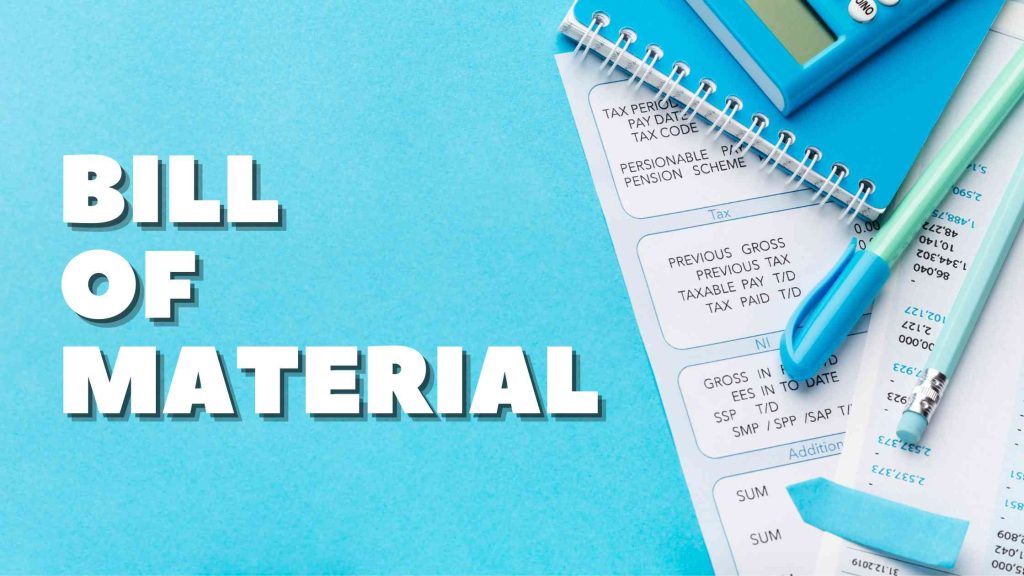A bill of materials (BOM) lists materials, sub-assemblies, components, sub-components, and associated quantities needed to complete a job. The BOM also requires quality control over each step to ensure that defective or substandard components are not found in the final product. If faulty parts are detected, they must be replaced or modified to meet the specified standard.
Spreadsheets and manual processes could be more efficient, time-consuming, and prone to error.
Spreadsheets are great, but they have limitations. If you’re a manufacturing company with complex production processes, you need something more than spreadsheets to handle your business.
Due to their efficiency and accuracy, ERP solutions with integrated BOM functionality or a BOM-specific software solution are the preferred method for managing Bills of Materials (BOMs). However, most manufacturers have not leaped from error-prone and time-wasting manual systems like BOM spreadsheets to fully automated BOMs.
So, what are some drawbacks to using spreadsheets to manage your bill of materials? Here are two of them.
Spreadsheets often need to be more efficient and error-prone.
A BOM, or bill of materials, lists all the parts used in manufacturing a product. A spreadsheet must be equipped to manage the complex and exacting processes of creating a BOM. With thousands of data points to be entered into a typical BOM, human error is nearly a given and can have damaging consequences if not discovered immediately. Moreover, the sheer volume of manual data entry required to complete the BOM makes it overly time-inefficient and costly.
Version control issues can cause significant problems if dealt with slowly.
Revisions to the bill of materials (BOMs) are commonplace throughout the evolution of a product, and these changes must be communicated internally to other departments and the supply chain. When revisions are made, it’s imperative that everyone can see the latest version of a BOM at the same time.
Unfortunately, spreadsheets are not designed for version control, and it can be hard to maintain proper control over data in a spreadsheet.
Sometimes, teams from different departments manually input changes, leading to mistakes and chaos. Whose version is the right one? Can you trace back to where all the changes were made, who made them, and when? It is difficult to achieve with multiple spreadsheets or large numbers of people involved in any change process.
Version control issues occur when the wrong spreadsheet revision is sent to suppliers, which throws off the entire production process. Another example is when one revision is sent to one department and another to a different department, so they are looking to varying BOMs for the same product. To prevent this from happening, all parties must be in sync always!
Automated BOMs are a solution to the problem of manual errors in manufacturing.
By using an automated BOM system in your production process, you can avoid many of the headaches related to managing bills of materials and assemblies. By automating these tasks, you will be able to:
- Keep your materials stocked so you stay supplied during production.
- Use real-time data to help set production schedules, estimate labor requirements, and calculate other costs.
- Ensure the BOM is as accurate as possible by integrating input from all departments that could affect it.
Some of the benefits of using an automated Bill of Materials (BOM) or Enterprise Resource Planning (ERP) system include the following:
Time, money, and mistakes can be saved by using this product.
Automated BOMs prevent the time-consuming and error-prone process of entering data by automatically pulling together all the necessary components, including engineering drawings, part number lists, spreadsheets (if applicable), and other documents, into one integrated system.
Streamlined production can help you save time and money.
Production typically begins with a production order listing the raw materials and production steps involved in making an item by a specific deadline.
A fully automated bill of materials system will extract data from integrated modules to create the requirements for the production order. It will provide a hierarchical arrangement of components that lists all raw materials and child items required to assemble and produce the finished product.
Integrating the parts of the bill of materials into a single instruction set helps to optimize resources and minimize inefficiencies.
Say goodbye to version control issues.
Product development requires a secure and up-to-date Bill of Materials (BOM) that all internal and external stakeholders can access.
With an automated bill of materials, collaboration among different teams and departments is a breeze. Everyone has access to the latest BOM, and changes made by one group are immediately visible to everyone else.
Another tremendous time-saving asset of an automated BOM is that you can take a preexisting template from a previous BOM, make a few edits, and then use that as the basis for a new BOM.

Vijay comes with a vast experience in ERP and enterprise solutions space with about 20 years of experience in various packaged application like Acumatica, SAP, Orion, Salesforce.com, SugarCRM and, SalesLogix.

